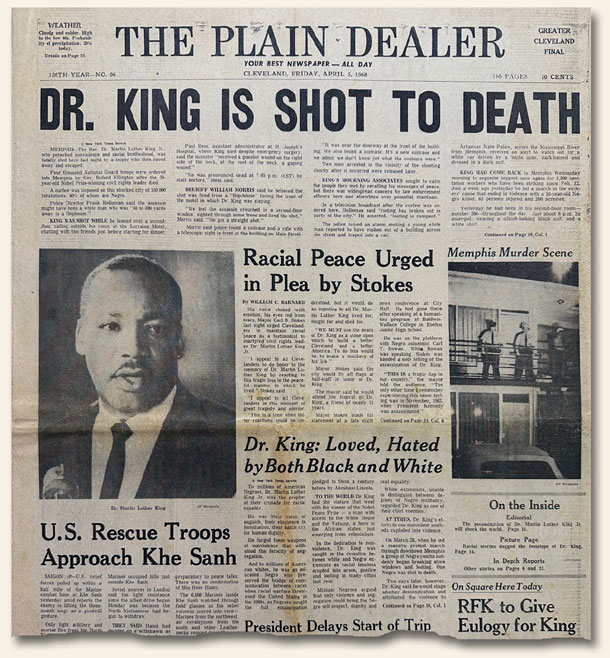Who’s Who in Newspapers? Pamela Sparhawk edition…
March 22, 2024 by GuyHeilenman · Leave a Comment
The 7th installment of Who’s Who in Newspapers:
Thanks to Swann Auction Galleries, we discovered another fascinating but unheralded name which appeared in three 1817 issues of the Columbian Centinel (see a photo of the notice below). Swann staff provided the following background:
Pamela Sparhawk was born circa 1761 in Africa, was captured as a young girl and brought to Boston in slavery and was granted her freedom during the American Revolution. She had been separated from her brother by her original owner, but miraculously reconnected with him in Boston, where he owned property and was living under the name Samuel Bean. When Samuel died in 1816, Pamela petitioned the court to be recognized as his heir. Her petition ran three times in the Columbian Centinel newspaper, telling the story of her life: “Pamela Sparhawk of Boston . . . is a native of Africa, and was brought from thence to the West-Indies by a slave trader . . . and was a slave in the family of Rev. Mr. Merriam, of Newton, until the American Revolution. . . Samuel Bean acknowledged her to be his sister and was satisfied of the fact, but it would be difficult if not impossible for her in a court of law to establish her claim . . . in consequence of the unhappy circumstance, which will be easily perceived.” The notices were signed in type with her mark, a sideways capital “X.” The statement was witnessed by Congressman Timothy Fuller (father of the important feminist author Margaret Fuller), but it apparently went unheeded by the General Court.
Pamela Sparhawk’s life has recently been reconstructed and celebrated by the Historic Newton organization in an online exhibition, “Finding Pamela: Writing a New History,” and was described in the Boston Globe on 30 June 2021.
The link to the auction (which at the time of this post was still in the future) is:
SWANN Auction #2663 – The petition of formerly enslaved woman Pamela Sparhawk
Thankfully we had an issue with this coverage as well, but the greatest gain was the research which Swann’s offering inspired. In less than 15 minutes we were able to locate *background information on Pamela which we found qui te interesting.
If you’re curiosity has been piqued to the point where you decide to discover more about her through the following link, please note the additional related information shown below the heading: “Who was Pamela Sparhawk?” Enjoy.
FINDING PAMELA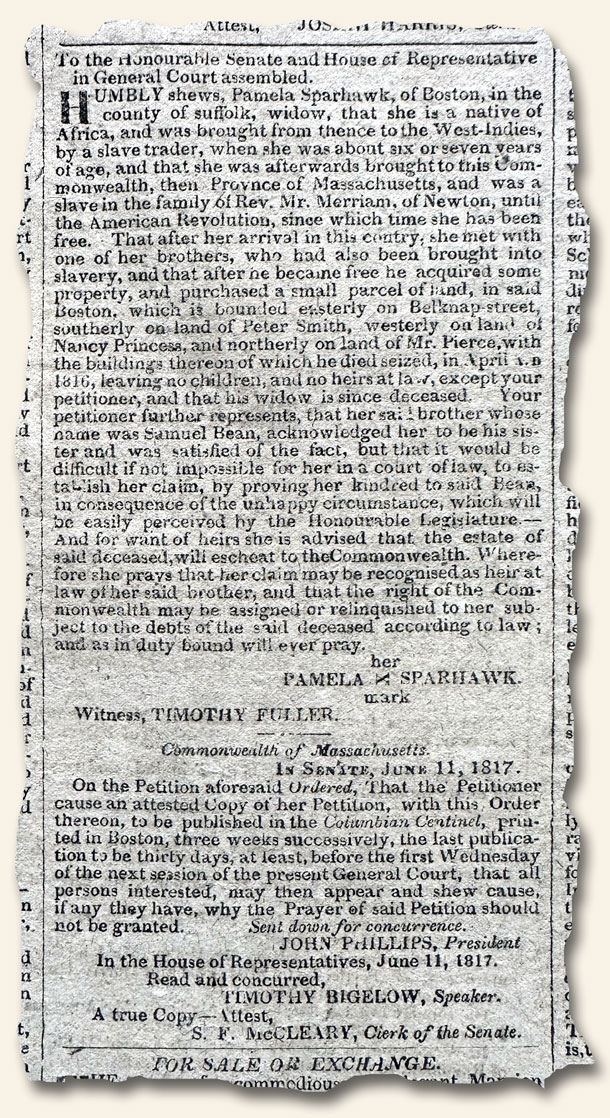
Dramatic Headlines Speak for Themselves… Martin Luther King Jr Assassinated!
March 11, 2024 by GuyHeilenman · Leave a Comment
The best headlines need no commentary. Such is the case with The (Cleveland) Plain Dealer, April 5, 1968, which featured a report on the assassination of Reverend Dr. Martin Luther King Jr:
“DR. KING IS SHOT TO DEATH”
The impact of Newspapers on the abolition of slavery…
August 4, 2023 by GuyHeilenman · Leave a Comment
 The impact print media in general, and newspapers in particular had on attitudes towards slavery cannot be overstated. The abolitionist press was in full-force during the early-to-mid 1800’s with publications such as The Anti-Slavery Bugle, The Emancipator, the National Anti-Slavery Standard, the National Era (which had the honor of being the first to print Harriet Beecher Stowe’s “Uncle Tom’s Cabin”), among those who carried the torch. While some publishers became household names during this critical period in American history (William Lloyd Garrison – publisher of The Liberator), Frederick Douglass – publisher of the North Star [later, the Frederick Douglass’ Paper], and Horace Greeley – publisher of the New York Tribune), a slew of others, while highly influential, have largely been forgotten. One such unheralded publisher was Hezekiah Niles’, the publisher of the Niles’ Register from Baltimore, Maryland. While Niles’ Register would not be placed under the umbrella of The Abolitionist Press, not wearing this label coupled with its heavy focus on political issues may have played to his advantage when Hezekiah wrote and published his “Mitigation of Slavery” in serialized form over a span of 8 issues in 1819. It may not have had an Uncle-Tom’s-Cabin-level impact among the masses, there is little doubt the minds of many in-and-around Washington D.C. were challenged to keep the abolishment of slavery at the forefront of both political and public discourse. The full text of his essay can be read on-line, however, photo-snippets of portions of an original as well as a brief description may be viewed on the Rare Newspapers website: Hezekiah Niles’ “Mitigation of Slavery“. His final thoughts are shown below.
The impact print media in general, and newspapers in particular had on attitudes towards slavery cannot be overstated. The abolitionist press was in full-force during the early-to-mid 1800’s with publications such as The Anti-Slavery Bugle, The Emancipator, the National Anti-Slavery Standard, the National Era (which had the honor of being the first to print Harriet Beecher Stowe’s “Uncle Tom’s Cabin”), among those who carried the torch. While some publishers became household names during this critical period in American history (William Lloyd Garrison – publisher of The Liberator), Frederick Douglass – publisher of the North Star [later, the Frederick Douglass’ Paper], and Horace Greeley – publisher of the New York Tribune), a slew of others, while highly influential, have largely been forgotten. One such unheralded publisher was Hezekiah Niles’, the publisher of the Niles’ Register from Baltimore, Maryland. While Niles’ Register would not be placed under the umbrella of The Abolitionist Press, not wearing this label coupled with its heavy focus on political issues may have played to his advantage when Hezekiah wrote and published his “Mitigation of Slavery” in serialized form over a span of 8 issues in 1819. It may not have had an Uncle-Tom’s-Cabin-level impact among the masses, there is little doubt the minds of many in-and-around Washington D.C. were challenged to keep the abolishment of slavery at the forefront of both political and public discourse. The full text of his essay can be read on-line, however, photo-snippets of portions of an original as well as a brief description may be viewed on the Rare Newspapers website: Hezekiah Niles’ “Mitigation of Slavery“. His final thoughts are shown below.
Horrace Greeley, Fred Douglass, Harriet Beecher Stowe… Hezekiah Niles…
Snapshot 1960… From Small Beginnings…
May 25, 2023 by GuyHeilenman · Leave a Comment
What happened? On July 16, 1960, a group of eight African American students – seven in high school and one in college, entered the “whites only” wing of the public library in Greenville, South Carolina to protest the library’s policy of segregation (the library had separate wings for blacks and whites).
Peaceful or violent? They entered the “whites only” wing quietly, selected books from the shelves, and sat down to read in silent protest.
Effective? While only lasting 40 minutes (at which point they were arrested), their actions led to the eventual desegregation of the library a mere 2 months later.
Public response? According to Wikipedia, although the library put up a fuss, and even initially closed stating, “the efforts made by a few Negroes to use the White library will now deprive White and Negro citizens of the benefit of a library”, they eventually reopened due to pressure from the black and white residents of the community.
“Red and yellow, black and white; they are precious…”
Legacy? While it is hard to measure the spidering impact of such “small” efforts, one of the “Greenville 8” is now a household name: Reverend Jesse Jackson.
The small report found on page 19 of The New York Times dated July 17, 1960 is symbolically shown in large format below.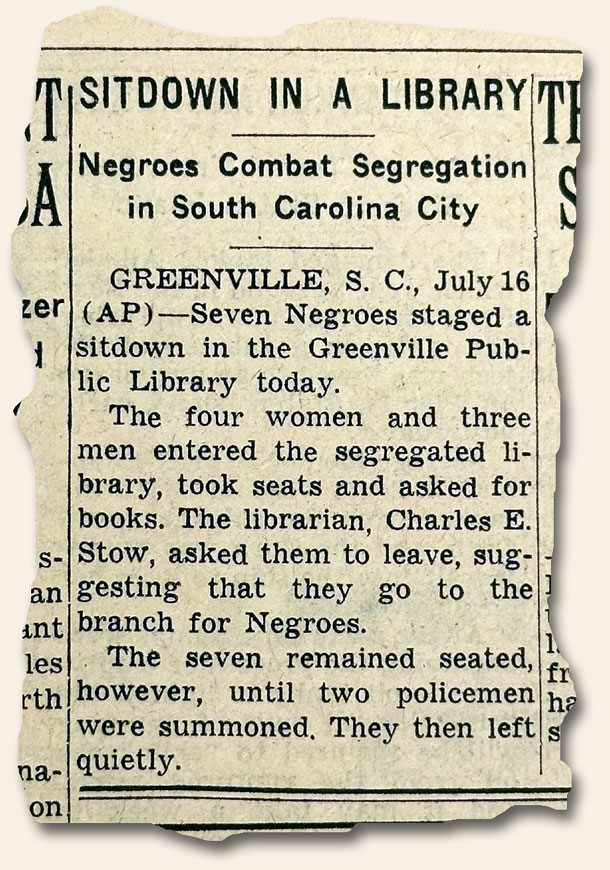
Our obsession with “firsts”… History gives us plenty – including John Rock…
November 28, 2022 by Laura Heilenman · Leave a Comment
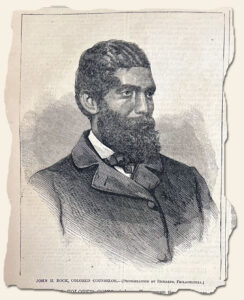 We are a people enamored with firsts: our 1st kiss … finishing in 1st place… 1st to fly… 1st to discover “The New World” (still up for debate)… When I study Scripture, I love using something called “the law of first mention” which says, we best understand a particular word or doctrine by finding and then learning all about the first place in Scripture the word or doctrine was revealed. We also love the 1st man on the moon, the 1st rock opera – and the list goes on and on. Speaking of 1sts…
We are a people enamored with firsts: our 1st kiss … finishing in 1st place… 1st to fly… 1st to discover “The New World” (still up for debate)… When I study Scripture, I love using something called “the law of first mention” which says, we best understand a particular word or doctrine by finding and then learning all about the first place in Scripture the word or doctrine was revealed. We also love the 1st man on the moon, the 1st rock opera – and the list goes on and on. Speaking of 1sts…
On February 2, 1865, THE NEW YORK TIMES gave us another first to appreciate, and then later, on February 25, 1865, HARPER’S WEEKLY put a face on this first: that is, John Rock becoming the first African American attorney admitted to the bar of the U.S. Supreme Court. The New York Times stated in part: “J. S. Rock, of the Supreme Court of Massachusetts, was to-day, on motion of Senator Sumner, admitted an Attorney and Counsellor in the Supreme Court of the United States.” Quite historic!
Whether we are reading or collecting “early” newspapers, history provides us with a fascinating list of 1sts which can be celebrated and studied… 1st shut out in baseball… 1st Hispanic Supreme Court Justice… shall I go on?
Juneteenth Revisited – “The rest of the story”…
June 27, 2022 by GuyHeilenman · Leave a Comment
 Roughly a week ago we were observing the most recent addition to our list of Federal Holidays: Juneteenth, which commemorates the day when Union troops marched into Galveston, Texas and Major General Gordon Granger informed the people of Texas that all enslaved people were now free. His General Order (No. 3) stated: “The people of Texas are informed that, in accordance with a proclamation from the Executive of the United States, all slaves are free…”. However, what is that at the end? Dot, dot, dot? There’s more?
Roughly a week ago we were observing the most recent addition to our list of Federal Holidays: Juneteenth, which commemorates the day when Union troops marched into Galveston, Texas and Major General Gordon Granger informed the people of Texas that all enslaved people were now free. His General Order (No. 3) stated: “The people of Texas are informed that, in accordance with a proclamation from the Executive of the United States, all slaves are free…”. However, what is that at the end? Dot, dot, dot? There’s more?
His full order reads as follows: “The people of Texas are informed that, in accordance with a proclamation from the Executive of the United States, all slaves are free. This involves an absolute equality of personal rights and rights of property between former masters and slaves, and the connection heretofore existing between them becomes that between employer and hired labor. The freedmen are advised to remain quietly at their present homes and work for wages. They are informed that they will not be allowed to collect at military posts and that they will not be supported in idleness either there or elsewhere.” In other words, “You are free, but if you think the government is going to support you if you leave your new ’employer’, think again.” For many, this would be analogous to someone who was bound, kidnapped, and being transported by airplane to some horrible location having their bindings removed and told they were welcome to leave any time they want (albeit, at 10,000 feet without a parachute). While this Order is quite historic, and the day does deserve to be celebrated, there is a whiff of Hotel California in the air: “You can check-out any time you like, but you can never leave!”
Am I exaggerating – misrepresenting the circumstances? One might think so, but an article I recently discovered within a July 16, 1865 issue of The New York Times which printed a follow-up Order by General Granger given approximately one week later begs to differ: 
Even when granted with good intentions, freedom needs to be embraced – and the “doing so” is often fraught with hardship. However, while the struggle continues, taking time to celebrate this momentous occasion (along with the many victories which have occurred since June 19, 1865) is worthy of our unified, citizen-wide efforts – regardless of our racial, social, political, religious or economic differences. The intrinsic hope of “We The People!” must ever be before us.
The Fight Against Slavery… 1822…
June 13, 2022 by GuyHeilenman · Leave a Comment
 If asked to name famous men and women who fought to free slaves and/or to bring an end to this horrible era in American history, most short-lists would likely include Frederick Douglass, Harriet Beecher Stowe, Sojourner Truth, Harriet Tubman, and John Brown, but many others were also sacrificially and emphatically committed to the cause who are relatively (if not completely) unknown. Such is the case of Telemaque, a free former slave who was executed for conspiracy. If you are from Charleston, SC, you likely know his name long with a handful of his accomplishments; however, the remainder of us would do well to learn more about him: Telemaque (Denmark Vessey)
If asked to name famous men and women who fought to free slaves and/or to bring an end to this horrible era in American history, most short-lists would likely include Frederick Douglass, Harriet Beecher Stowe, Sojourner Truth, Harriet Tubman, and John Brown, but many others were also sacrificially and emphatically committed to the cause who are relatively (if not completely) unknown. Such is the case of Telemaque, a free former slave who was executed for conspiracy. If you are from Charleston, SC, you likely know his name long with a handful of his accomplishments; however, the remainder of us would do well to learn more about him: Telemaque (Denmark Vessey)
A woodcut masthead is worth a thousand words… Slavery…
May 16, 2022 by GuyHeilenman · Leave a Comment
A few weeks back my favorite person posted: Take a Closer Look … The Delicate Details of Woodcut Prints…
Such prints are truly amazing. However, as is the case with (most?) works of art, to some degree they tell a story. One such story is that of “Slavery – The Cry for Emancipation”, as told through the masthead of The Liberator. While we have many historic newspapers containing articles chronicling the path from the horrors of slavery, through emancipation, then on to suffrage and beyond, few rival what is communicated through this most-amazing, intricate, illustration which was present at the top of nearly every issue. At a distance its beauty speaks to the eyes, but a close-up view shouts to the heart: ENOUGH!
See for yourself:

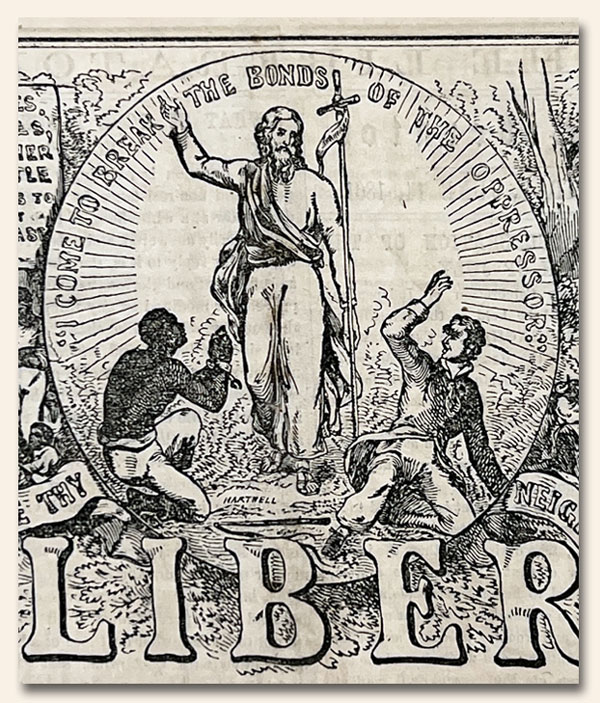
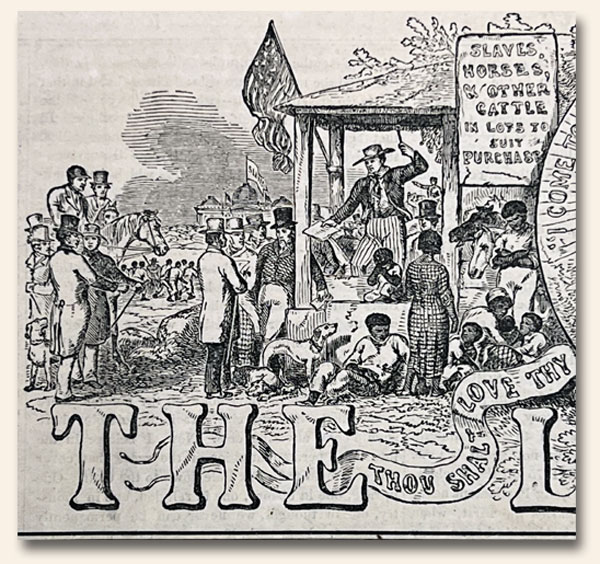
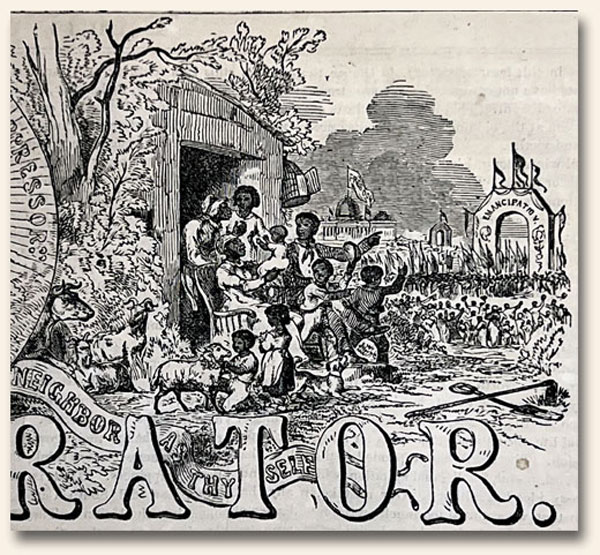
A Thankful Heart from the Mouth of Babes…
September 20, 2021 by Laura Heilenman · Leave a Comment
Sometimes an image perfectly captures an emotion or a moment in time. Sometimes that moment is in the present but sometimes it won’t be noticed for decades. Recently, as I was putting together issues for one of our collectors, I came across an image on the front of a Harper’s Weekly dated January 4, 1902 which was that perfect snapshot. Our culture seems to have gotten murky and a bit hard to decipher at times., but on the front of the photo of a little boy captured the simplicity of his life. He was thankful for a man who had sacrificed greatly to make his life better. Perhaps, as a way to cut through the muck and mire of our time, a thankful heart is just what our culture… what we… what I need.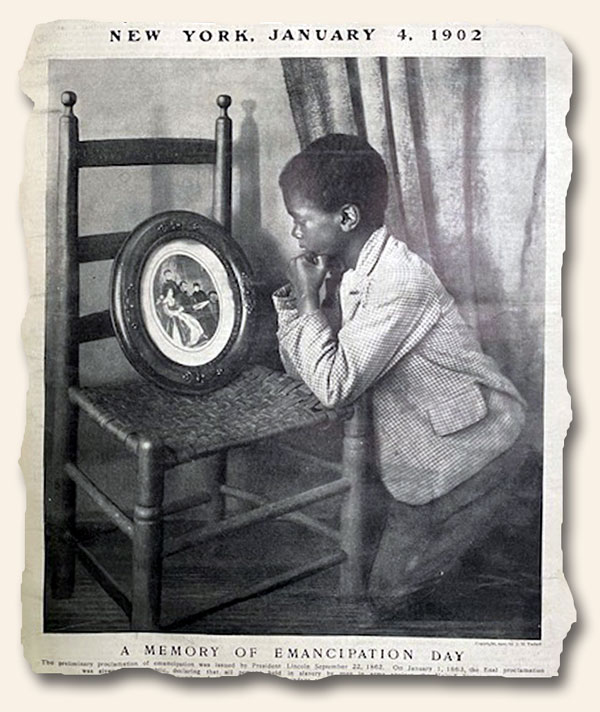
The American Dream at Work…
June 10, 2021 by Laura Heilenman · Leave a Comment
What is the American Dream? We often hear that phrase bantered about but people seem to have differing views of just what it means. I was recently reading an article by a young woman in her early thirties with 2 small children. She and her husband had decided to move to Hawaii for a simpler life… a life not cluttered with as many things or as many stresses. Her final words on the subject were, “we chose to give up the American Dream”. WHAT !?! She had me until that final statement. Is it possible she could have grown up in this country and not actually know what the American Dream is !?! Could she have been deluded to believe the American Dream is about things and schedules and the size of your home? Ok … I’ve taken a breath and calmed down a bit. One of the blessings we have as students of American History is a foundational knowledge of what our Founders believed the American Dream was. Let me allow them to speak for themselves:
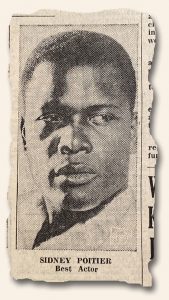 “We hold these truths to be self-evident, that all men are created equal, that they are endowed by their Creator with certain unalienable Rights, that among these are Life, Liberty and the pursuit of Happiness.”
“We hold these truths to be self-evident, that all men are created equal, that they are endowed by their Creator with certain unalienable Rights, that among these are Life, Liberty and the pursuit of Happiness.”
The pursuit of Happiness … very different from guaranteed happiness. In many ways, the ability to pursue something is a far greater gift than it being given to you. There is often joy and a deep sense of accomplishment in the striving. Being handed something on a silver platter lacks the ability to give the same growth and satisfaction.
On April 14, 1964, The Leominster Enterprise wrote a front page article covering the Academy Award winners from the night before. One of these stars was Sidney Poitier, “who struggled from the poverty of a Caribbean tomato farm … Poitier, who was born in Florida, but who was raised on a tomato farm in Nassau, was unable to addend school until he was 11 years old. Two years later he was forced to help support his family. When he was 16 he moved to New York City with a series of odd jobs, including ditch digger, store clerk, pin-boy in a bowling alley and longshoreman. He finally joined the American Negro Theater and worked as a janitor in exchange for acting lessons. He advanced to small roles and moved on to stage parts…”.
Now there is the American Dream at work!
PS. That evening, Sidney Poitier became the 1st black man to win an Academy Award – all due to his PURSUIT of the American Dream.



